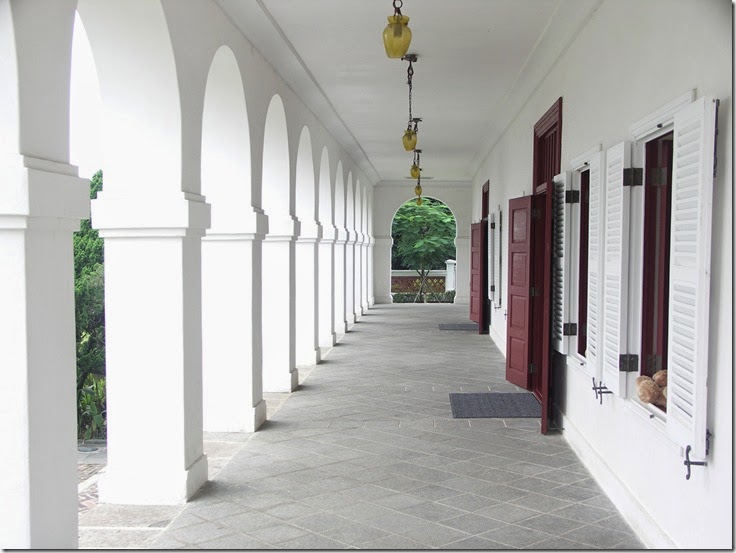菲律賓的通用語言叫作 Tagalog ,這其中有西班牙語,英語,福建話(和台語接近),廣東話(和客家語接近),梵語 Sanskrit、巴利語 Pali、印度語 Hindi,查莫洛語 Chamorro (和關島原住民語相近),馬來語 Malay,日本語...等等語言摻雜在內,可以說是語言的大熔爐、大雜燴,《維基百科》裡有詳盡的報導,版主這裡只挑選和台語或客語相關的詞彙。
- Apo (Hokkien: 阿公/A–kong) – Grandfather (apo means grandchild/grandchildren in Tagalog) ,台語無此用法,在客語 ah-pho1 是指「祖母」。
- Ate (Hokkien: 阿姊/A–chí) – Eldest sister (now a generic address for any female slightly older than the speaker) ,台語為 ah-tse2「姊姊」。
- Bakyâ (Hokkien: 木屐/ba̍k-kia̍h) – Native wooden sandals, 台語今天仍然稱「木屐」為 bak-kia7。
- Bihon (Hokkien: 米粉/bí-hún) – Rice vermicelli, 台語為 bi2-hun2。
- Hikaw (Hokkien: 耳鉤/hī–kau) – Earrings, 台語為 hinn7-kau1「耳鉤(耳環)」。
- Impò (Hokkien: 阿媽/A–má) – Grandmother
- Ingkóng (Hokkien: 阿公/A–kong) – Grandfather
- Kuya (哥哥; Cantonese: ko–ko; Hokkien: keh–ya) – Eldest brother. 台語為 koo1-ia5「姑爺」。
- Lumpia (Hokkien: 潤餅/jūn-piáⁿ) – Fried or fresh spring rolls. 台語為 lun7-biann2「潤餅,春捲」。
- Mami (Hokkien: 肉麵/bah-mī) – Meat and noodles in soup (Bam-i is also the name of another noodle dish), 台語無此用法,讀音像是「肉麵 bak-mi7」。台灣料理雖然將肉絲加入油麵去炒,但是一般稱作「炒麵 tsha2-mi7」或「炒大麵 tsha2-tua7-mi7」,不會特別說「肉」。
- Pancit (Hokkien: 便ê食/piān-ê-si̍t) – Noodles with sauce, 讀音像是台語「pien2-sit 扁食」。
- Petsay (Hokkien: 白菜/pe̍h-chhài) – Chinese cabbage, 台語「peh-tshai3 白菜」。
- Pesa (Hokkien: 白sa̍h) – Plain boiled , 台語今天仍然稱「白煮(僅放入滾燙開水煮熟)」為 beh-sa7。
- Sotanghon (Hokkien: 蘇冬粉/so-tang-hun) – Cellophane noodles, 台語「tang1-hun2 冬粉」,不知為何多了一個音「so」。
- Tikoy (Hokkien: 甜粿/Tih–ke) – Chinese New Year's cake, 台語「tinn1-kue2」。
- Toyo (Hokkien: 豆油/tāu–iû) – Soy sauce, 台語「tau7-iu5 豆油、醬油」。
- Tausi (Hokkien: 豆豉/tāu-si; "beans fermented/in brine") – Fermented black beans, 台語「tau7-sinn7 豆豉」。


1 則留言:
原來台語的冬粉原來是山東粉簡稱東粉的錯字,菲律賓語則保留了整個山東粉的閩南語讀音。
張貼留言